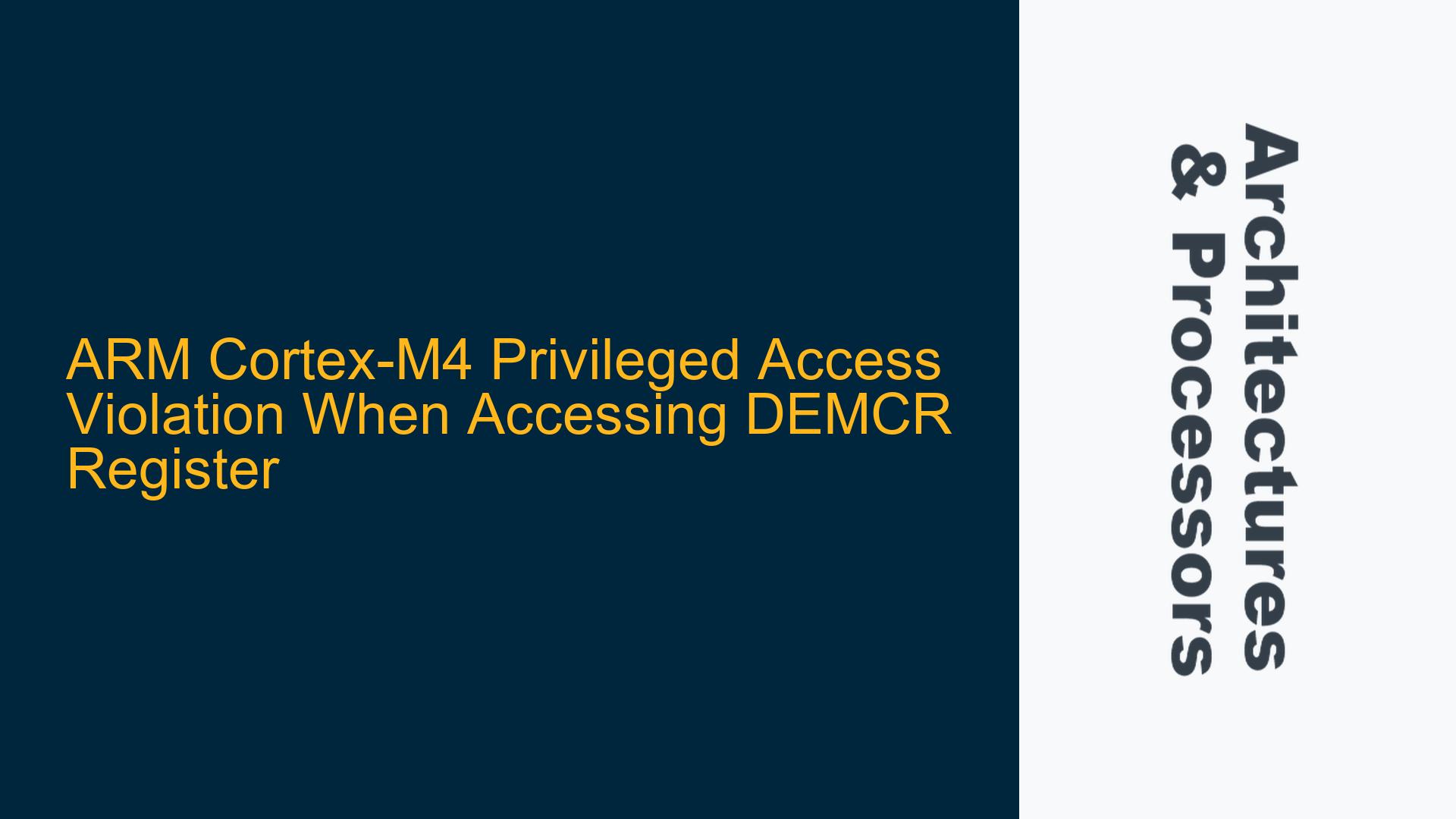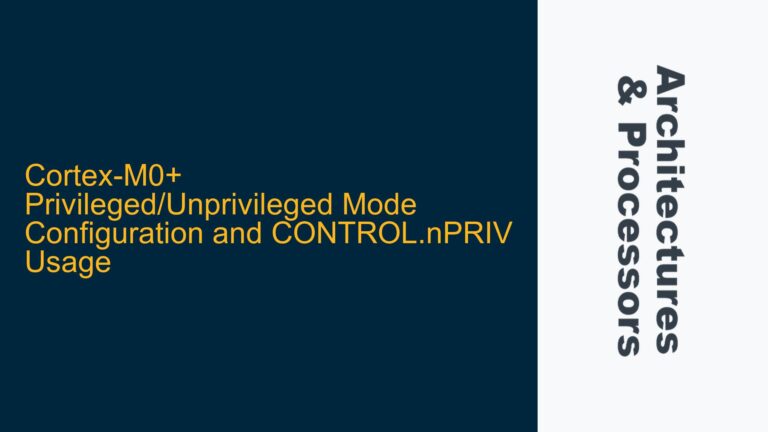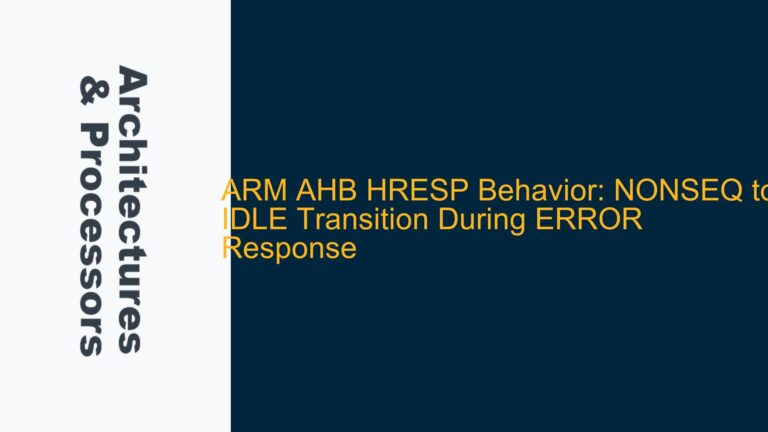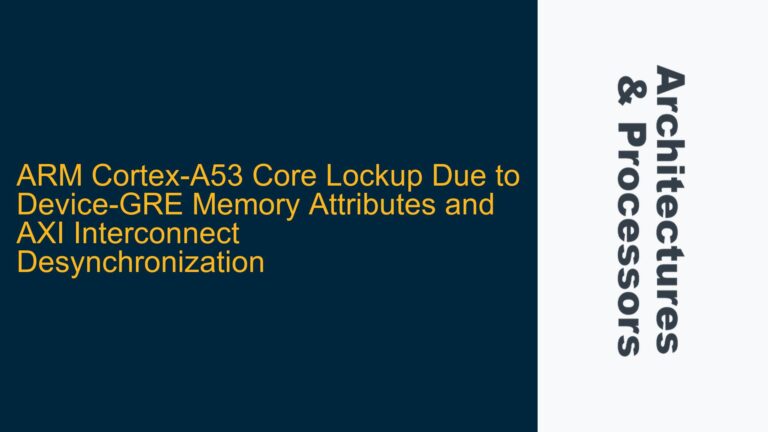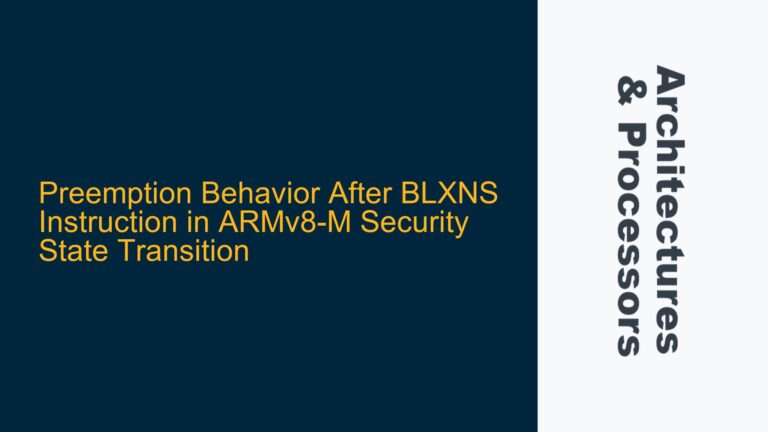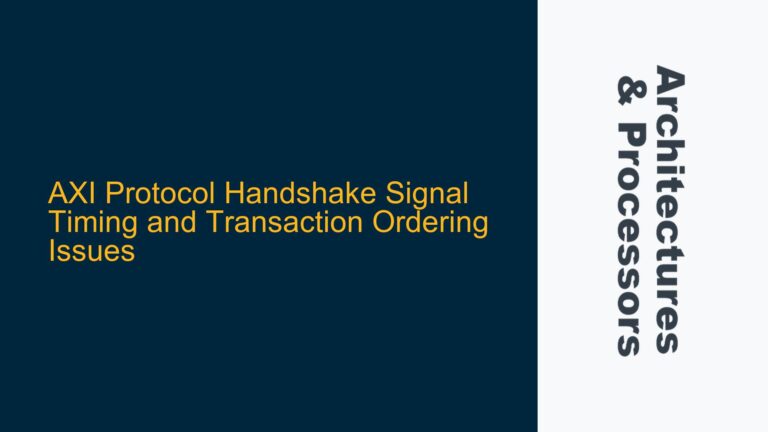ARM Cortex-M4 System Control Space (SCS) and Privileged Access Requirements
The ARM Cortex-M4 processor, like other ARM Cortex-M series processors, implements a privilege model that restricts access to certain critical system registers and memory regions. The System Control Space (SCS) is one such restricted area, which contains registers essential for system configuration, debugging, and exception handling. Among these registers is the Debug Exception and Monitor Control Register (DEMCR), which plays a critical role in enabling and configuring debug features such as halting the processor during exceptions or enabling the Debug Monitor.
The SCS is mapped to a specific memory address range, typically starting at 0xE000E000, and includes registers like the Nested Vectored Interrupt Controller (NVIC), System Control Block (SCB), and Debug Registers. Access to these registers is strictly controlled to prevent unintended modifications that could destabilize the system. The ARM Cortex-M4 architecture enforces this restriction by requiring the processor to be in a privileged state to access the SCS. If an unprivileged access attempt is made, the processor generates a UsageFault exception, which is the behavior observed in the described scenario.
The privilege model in ARM Cortex-M4 is managed through the CONTROL register, specifically the CONTROL.nPRIV bit. When this bit is set to 1, the processor operates in unprivileged mode, restricting access to privileged resources. Switching back to privileged mode requires either an exception entry (e.g., an interrupt or fault) or explicitly clearing the CONTROL.nPRIV bit, which can only be done in privileged mode. This dual-mode operation is fundamental to ensuring system security and stability, as it prevents unprivileged code from modifying critical system configurations.
DEMCR Register Access and Unprivileged Mode Exceptions
The Debug Exception and Monitor Control Register (DEMCR) is part of the SCS and is used to configure debug-related features. Its primary functions include enabling the Debug Monitor, controlling vector catch behavior, and managing trace system behavior. Access to the DEMCR register is explicitly restricted to privileged mode, as indicated in the ARM Cortex-M4 Technical Reference Manual (TRM) and the ARMv7-M Architecture Reference Manual. Attempting to access the DEMCR register while in unprivileged mode results in a UsageFault exception, which is the core issue described in the discussion.
The UsageFault exception is triggered when the processor detects an illegal operation, such as accessing a privileged register in unprivileged mode or executing an undefined instruction. In this case, the fault is caused by the access level violation. The fault is reported through the UsageFault Status Register (UFSR), which provides detailed information about the cause of the exception. Specifically, the INVSTATE bit in the UFSR indicates an invalid state transition or operation, which aligns with the unprivileged access attempt.
To diagnose this issue, developers must first verify the current privilege level of the processor. This can be done by inspecting the CONTROL.nPRIV bit or by examining the exception return value in the Link Register (LR) during exception handling. Additionally, the faulting instruction address can be retrieved from the Program Counter (PC) stored in the exception stack frame, allowing developers to pinpoint the exact location of the illegal access.
Resolving Unprivileged Access Violations and Restoring Debug Capabilities
To resolve the unprivileged access violation and regain access to the DEMCR register, developers must ensure that the processor is in privileged mode before attempting to access the SCS. This can be achieved through several methods, depending on the system design and operational requirements.
One approach is to temporarily elevate the privilege level by triggering an exception. When an exception occurs, the processor automatically switches to privileged mode, allowing access to the SCS and other restricted resources. For example, a software-triggered interrupt (e.g., using the SVC instruction) can be used to enter privileged mode and modify the DEMCR register. After completing the necessary operations, the processor can return to unprivileged mode by setting the CONTROL.nPRIV bit.
Another approach is to design the system such that critical operations requiring privileged access are handled by a dedicated privileged task or handler. This task can be responsible for configuring the DEMCR register and other SCS resources during system initialization or in response to specific events. By isolating privileged operations, developers can minimize the risk of accidental access violations and improve system robustness.
In cases where the processor is already in unprivileged mode and cannot be easily switched back to privileged mode, developers may need to rely on external debugging tools to regain control. For example, a hardware debugger can be used to halt the processor, inspect the current state, and manually modify the CONTROL.nPRIV bit or the DEMCR register. This approach is particularly useful during development and debugging but is not suitable for production systems.
To prevent similar issues in the future, developers should carefully review the privilege requirements of all system registers and memory regions before modifying the CONTROL.nPRIV bit. The ARM Cortex-M4 Technical Reference Manual and the ARMv7-M Architecture Reference Manual provide detailed information about the access levels for each register, enabling developers to design systems that comply with the architecture’s security model. Additionally, implementing runtime checks to verify the privilege level before accessing restricted resources can help catch potential issues early and prevent system instability.
By understanding the ARM Cortex-M4 privilege model and the restrictions on accessing the SCS, developers can effectively troubleshoot and resolve unprivileged access violations, ensuring reliable and secure system operation.
